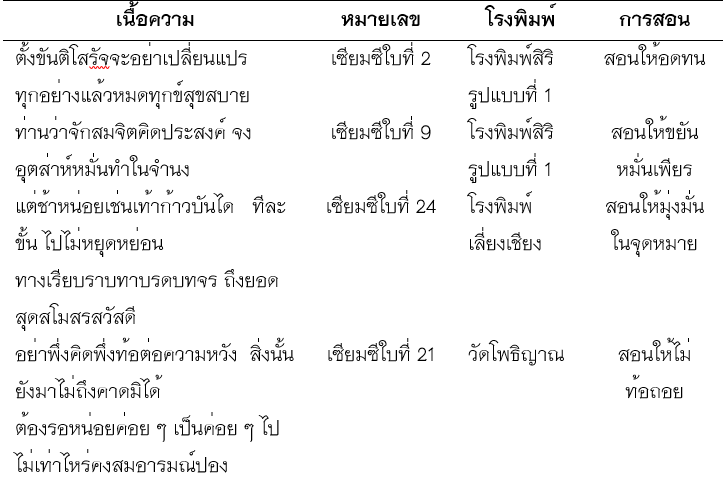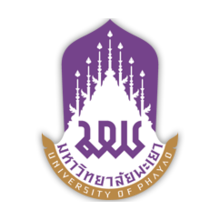The Gharavasa-dhamma that appears on the Esiimsi of the temple in the city of Phitsanulok Province.
Keywords:
Gharavasa-dhamma, Esiimsi, Amphoe Mueang Phitsanulok, Phitsanulok ProvinceAbstract
A study of Gharavasa-dhamma that appears on the Esiimsi from a temple in Mueang Phitsanulok district. Phitsanulok Province Which the research found that The content contained in the Esiimsi consists of 11 aspects, such as fortune, love, spouse, health, lawsuit, enemy, debt, teachings and beliefs, children, lost items. Work and travel.
As for the Gharavasa-dhamma that appear in the Esiimsi is a talk about the virtues for a good household life: Dama, which means taming and training oneself. Improve oneself to progress the most, followed by Khanti, which means tolerance, do their job with diligence and not give up.
Survey of risk-takers at the various temples in various districts in Mueang Phitsanulok In which 203 respondents were asked to enter from Google Forms, found that the majority are female 125 and males 78, aged between 21–30 years, 108 people, followed by the age 31–40 years, 37 people, professional students and 77 students, followed by the private sector. 37 people have single status, 173 people and marital status,
53 people. Most of the people who come to risk them leaves will come once a month, 173 people, but the level of belief in the results of the leaves is in the middle of 118 people, followed by a high level of 61 people. Bai Esiimsi will believe in fortune, 53 people, followed by work, 37 people and those who take the risk at most Esiimsi think that the Esiimsi teaches morals about life Carelessness, goodness, patience, perseverance Mind control, etc.
References
ประยงค์ อนันทวงศ์. (2525). แลหลังจีน. กรุงเทพ : รวมสาส์น, 23.
พระพรหมคุณาภรณ์ (ป.อ.ปยุตฺโต). (2553). พจนานุกรมพุทธศาสตร์ ฉบับประมวลธรรม. พิมพ์ครั้งที่ 18. นนทบุรี : โรงพิมพ์เพิ่มทรัพย์การพิมพ์, 113 – 114.
เพ็ญศรี บูรพาวิจิตรนนท์. (2539). วิเคราะห์ภาพพจน์เนื้อหาและความเชื่อจากใบเซียมซีของวัดในภาคเหนือ. วิทยานิพนธ์ กศ.ม., บัณฑิตวิทยาลัย มหาวิทยาลัยนเรศวร, พิษณุโลก, 87-100.
ราชบัณฑิตยสถาน. (2556). พจนานุกรมฉบับราชบัณฑิตยสถานพ.ศ. 2554. กรุงเทพฯ : นานมีบุ๊คส์พับลิเคชั่นส์, 406.
ไวกูณฐ์ สถาปนาวัตร. (2534). หนังสือเรียนโหราศาสตร์ใน 1 วัน. กรุงเทพฯ : โอเดียนสโตร์, 94 .
สุวิทย์ ภักดีราษฎร์. (2537). ศิลปวัฒนธรรมดำเนินการเสี่ยงทายเซียมซี. กรุงเทพฯ : วัฏจักรการเมือง, 57.

Downloads
Published
How to Cite
Issue
Section
License
ผู้นิพนธ์ต้องรับผิดชอบข้อความในบทนิพนธ์ของตน มหาวิทยาลัยพะเยาไม่จำเป็นต้องเห็นด้วยกับบทความที่ตีพิมพ์เสมอไป ผู้สนใจสามารถคัดลอก และนำไปใช้ได้ แต่จะต้องขออนุมัติเจ้าของ และได้รับการอนุมัติเป็นลายลักษณ์อักษรก่อน พร้อมกับมีการอ้างอิงและกล่าวคำขอบคุณให้ถูกต้องด้วย
The authors are themselves responsible for their contents. Signed articles may not always reflect the opinion of University of Phayao. The articles can be reproduced and reprinted, provided that permission is given by the authors and acknowledgement must be given.







